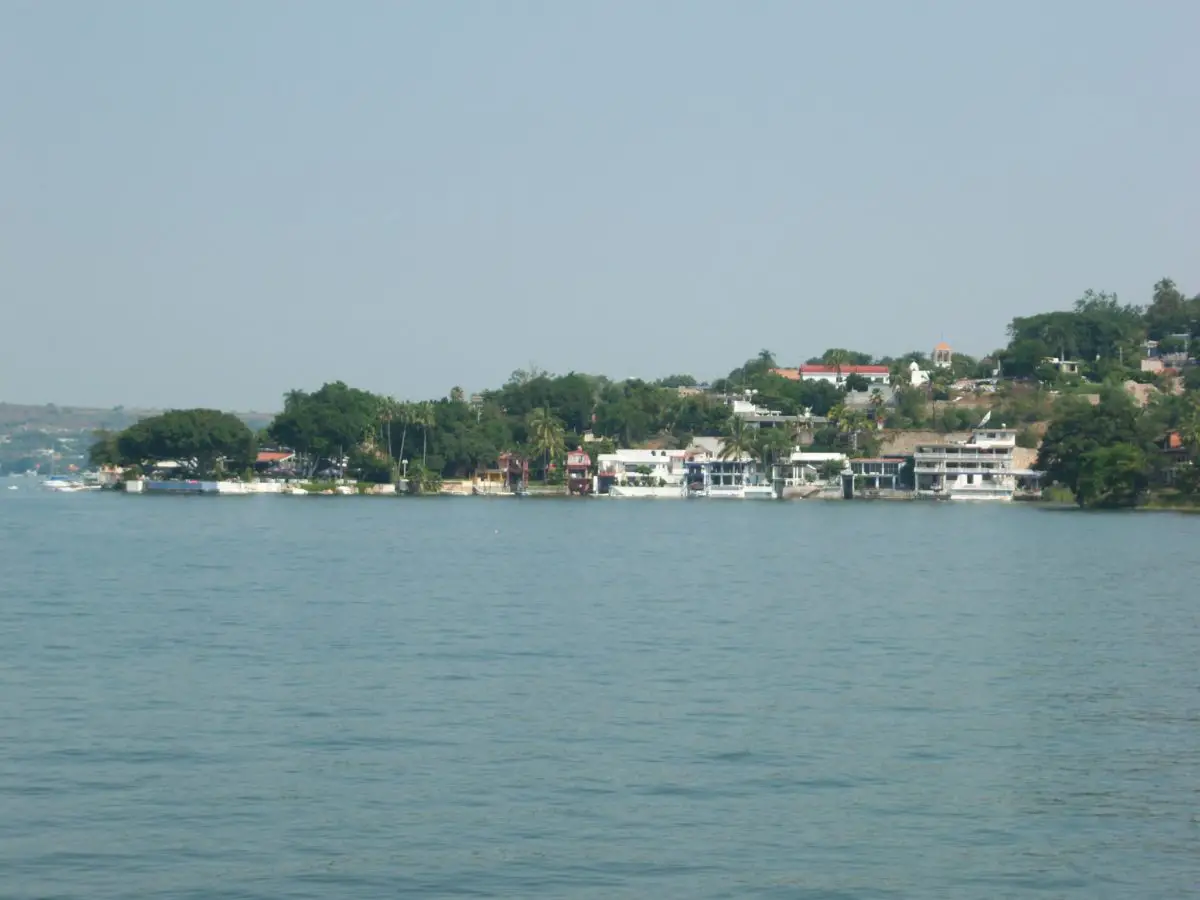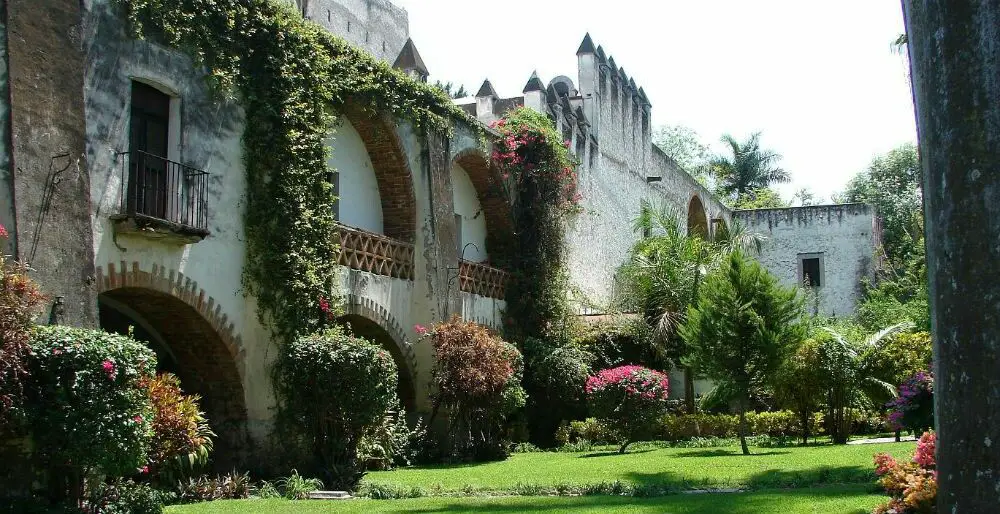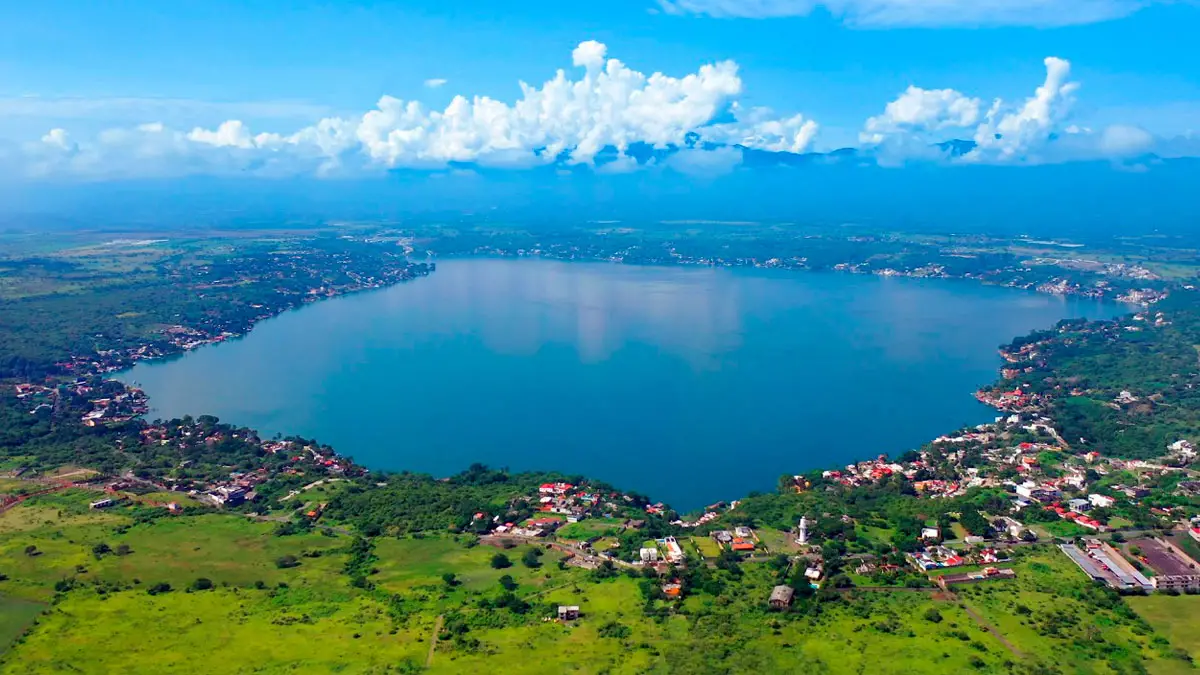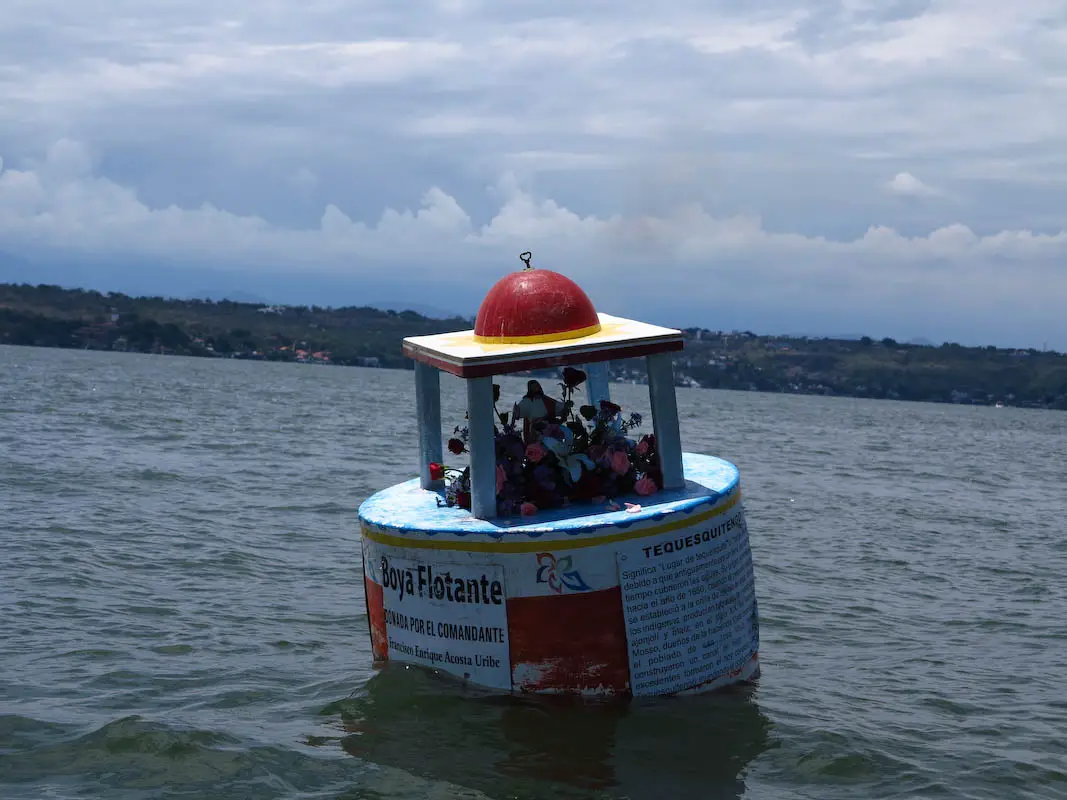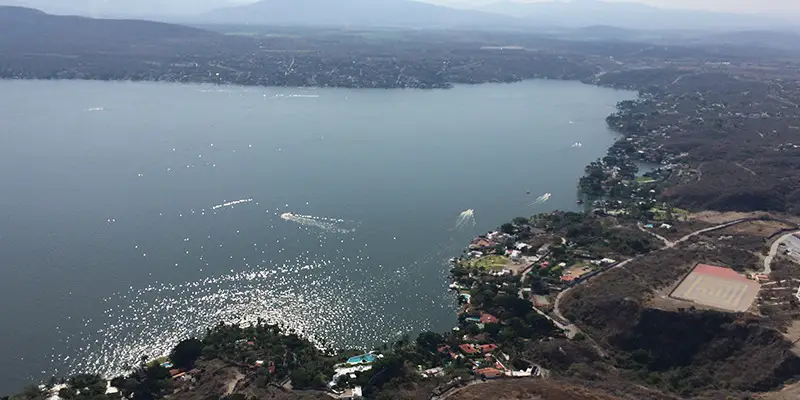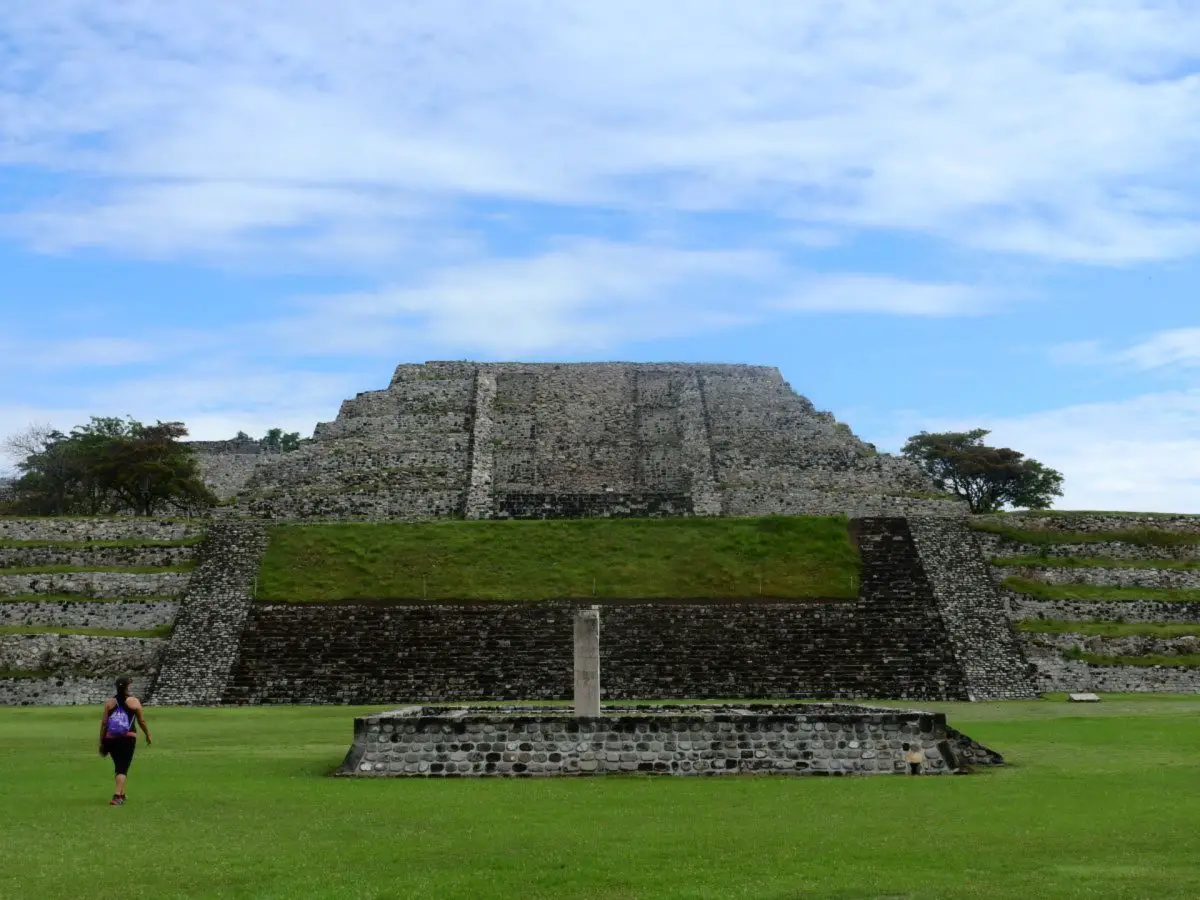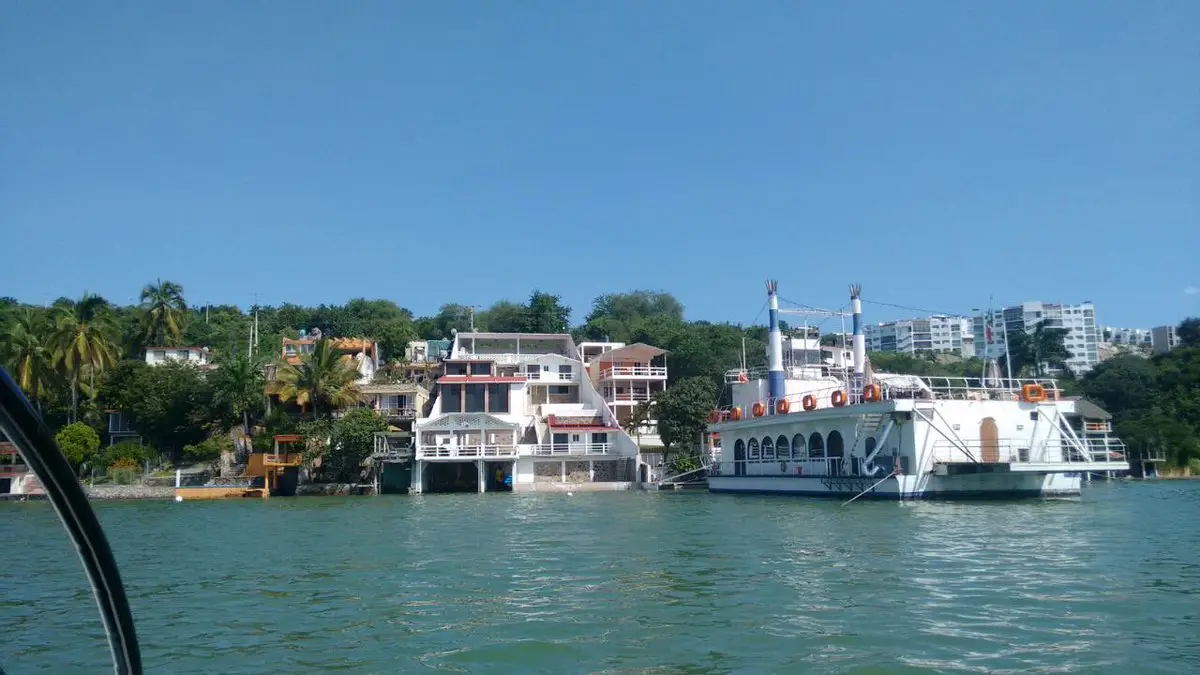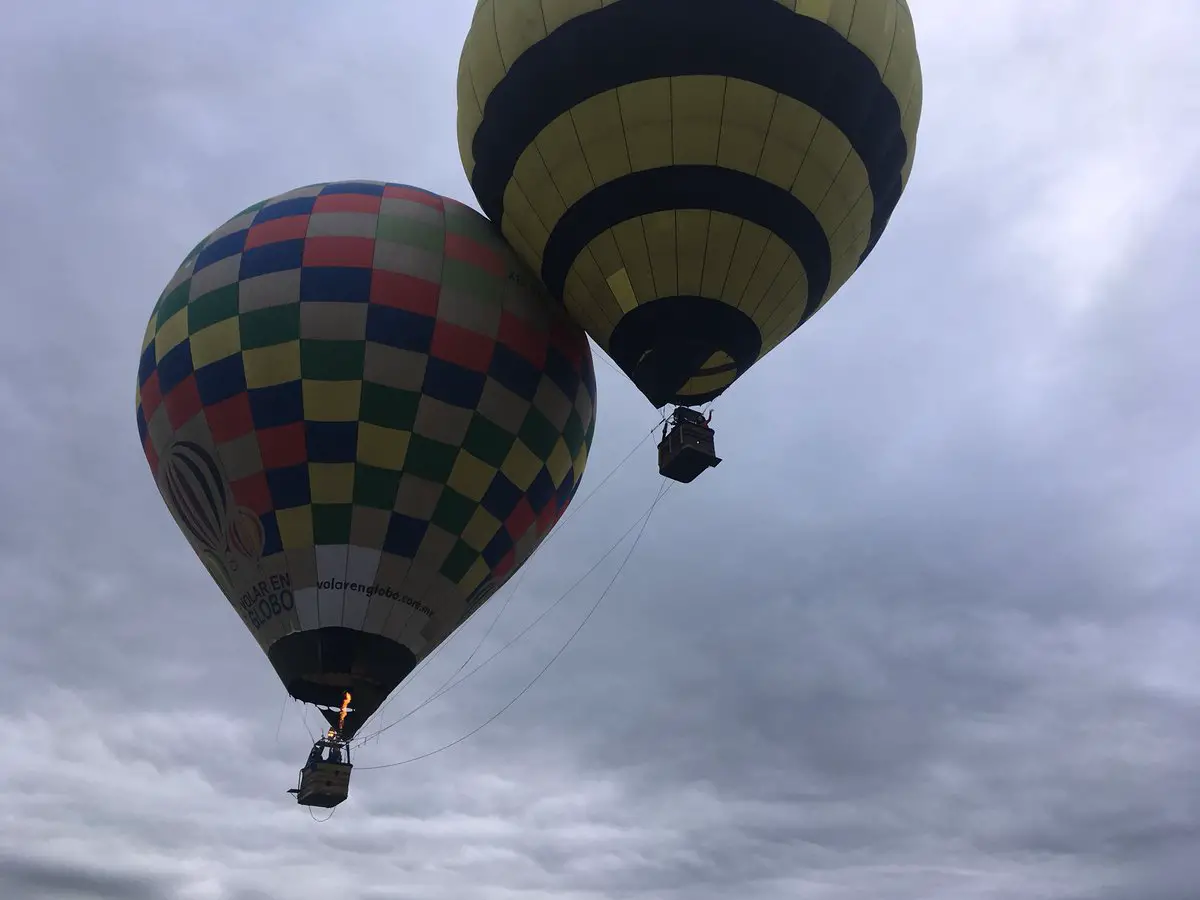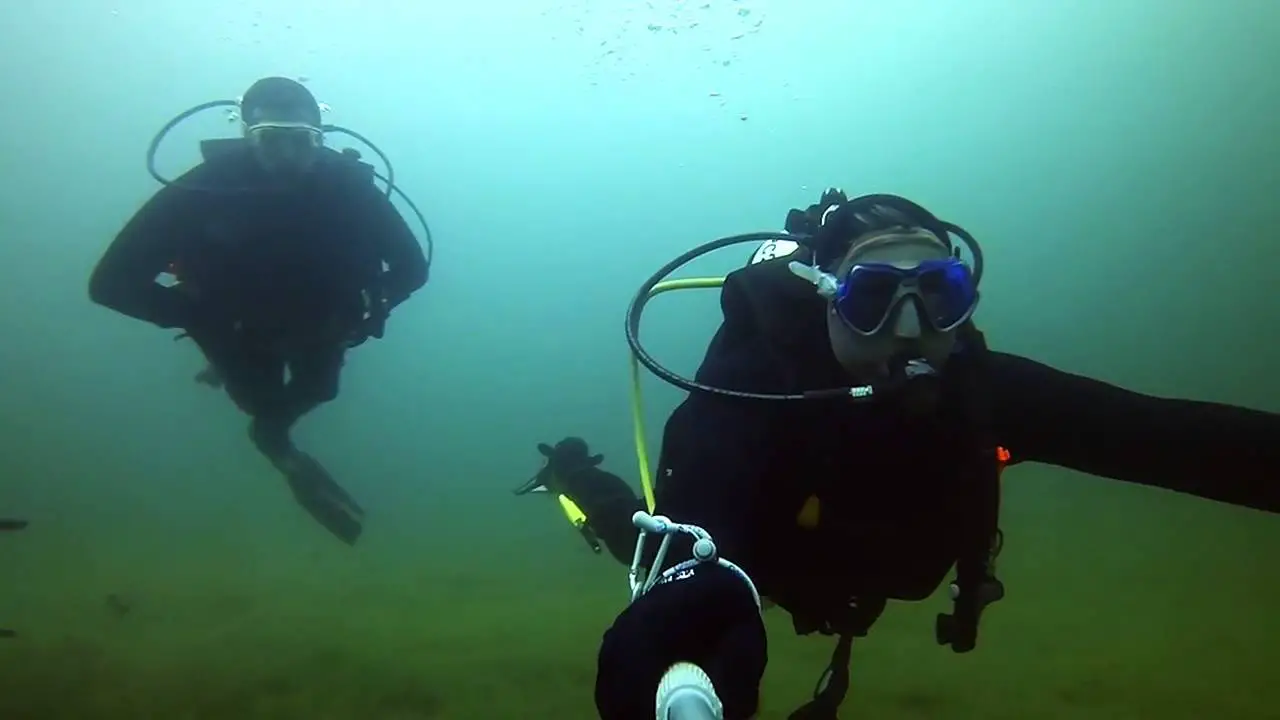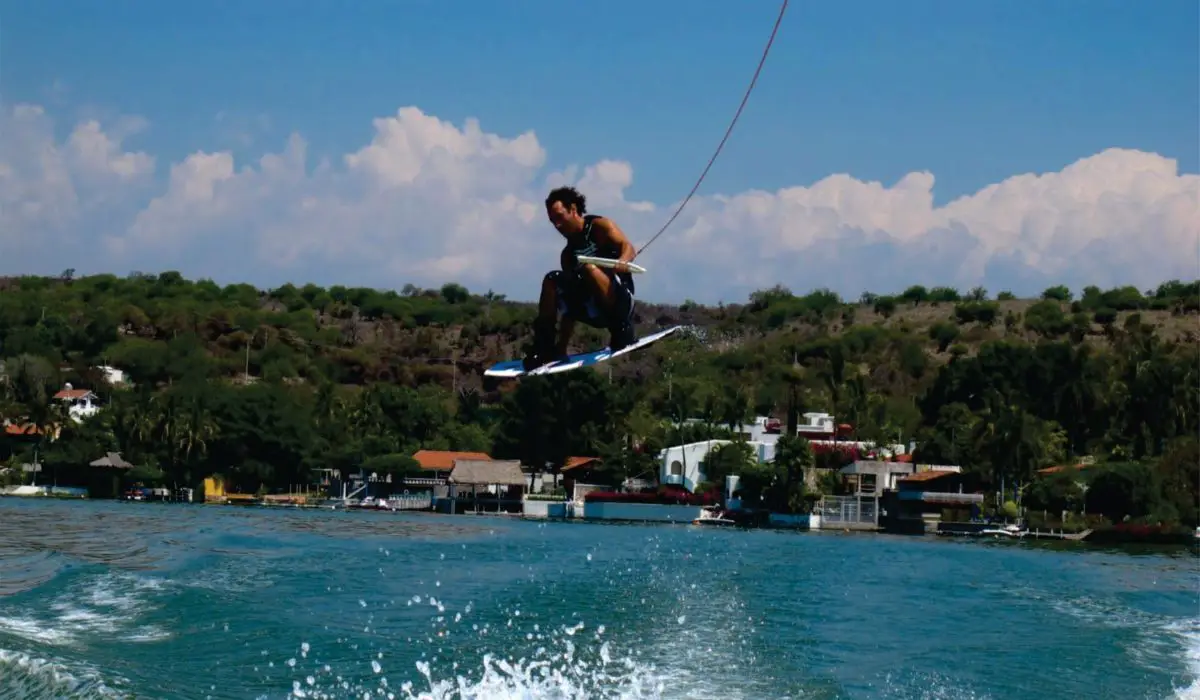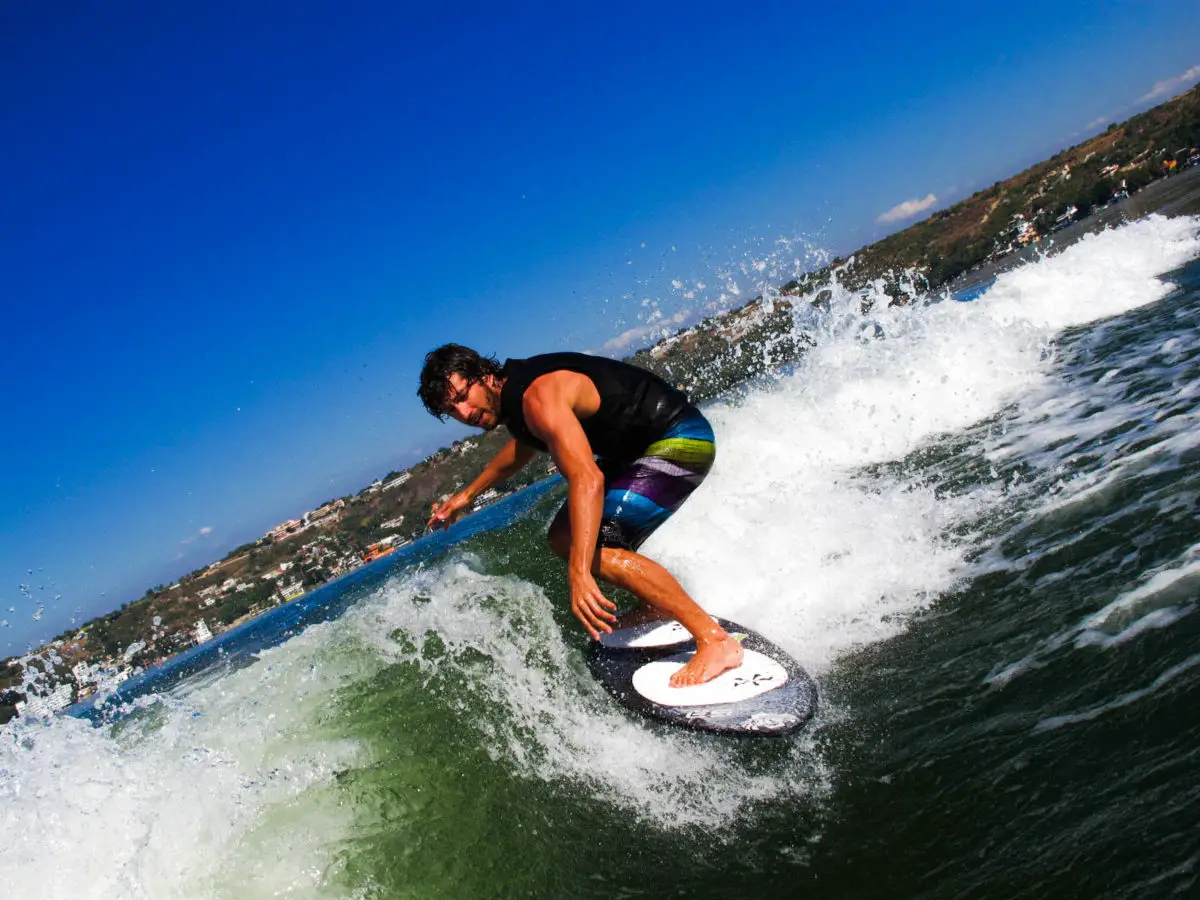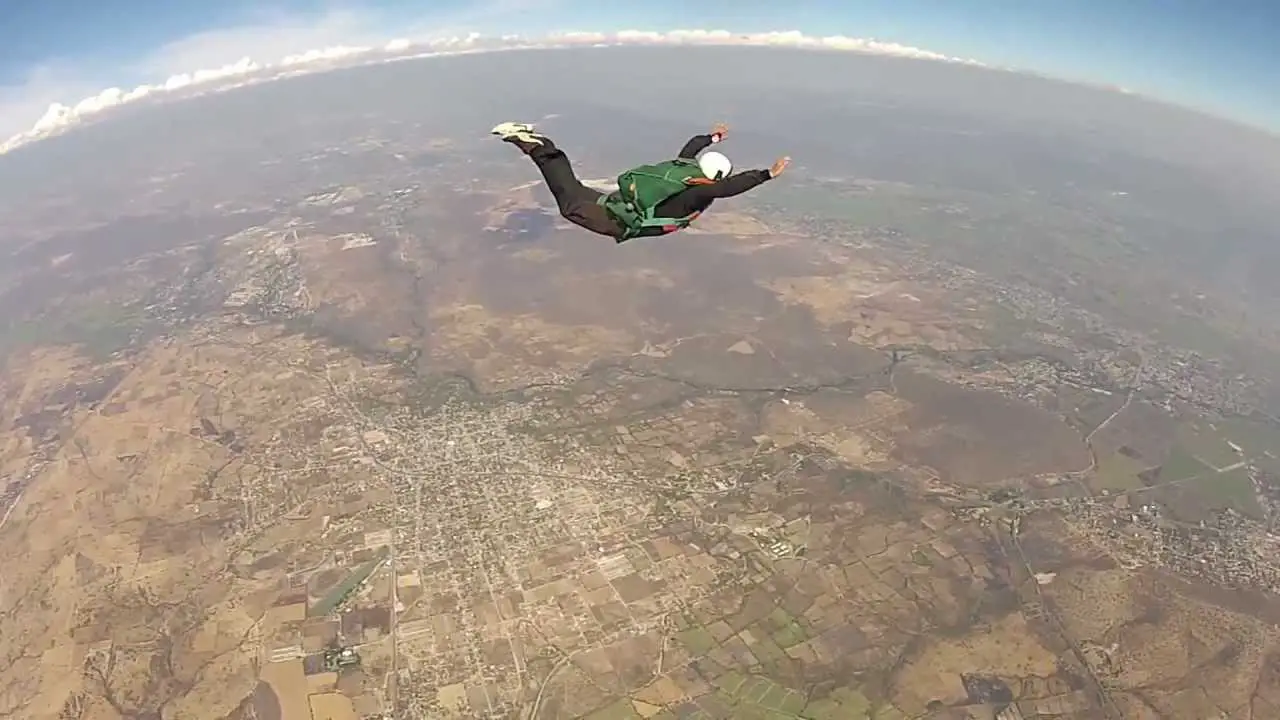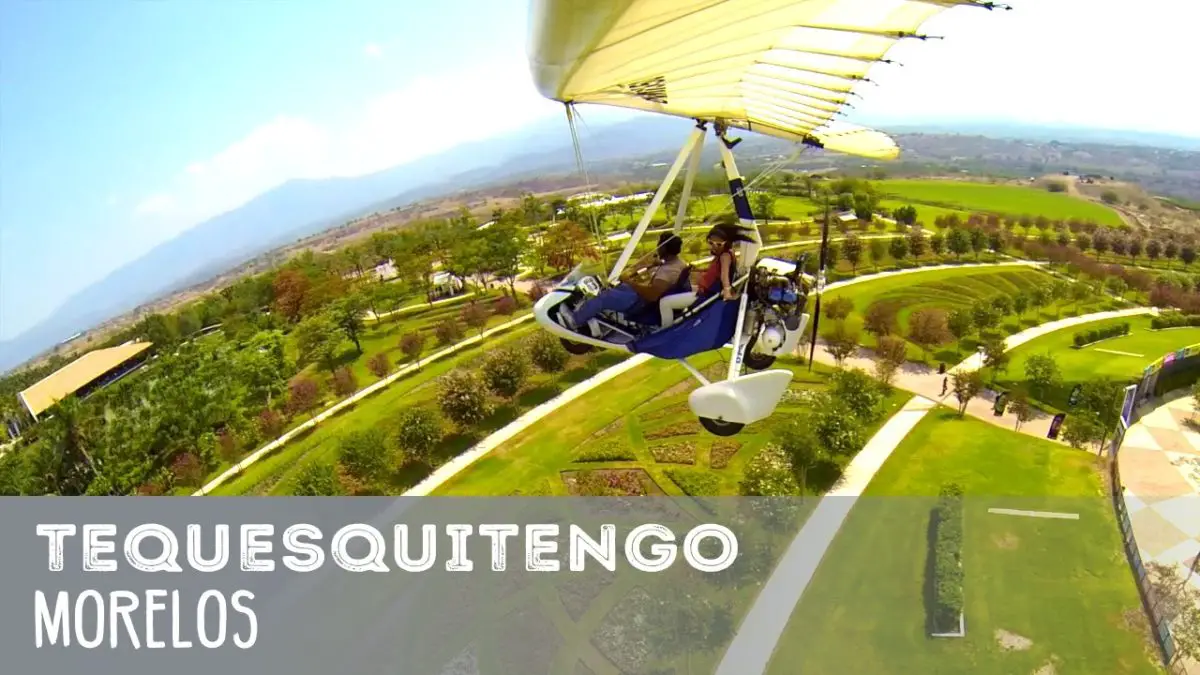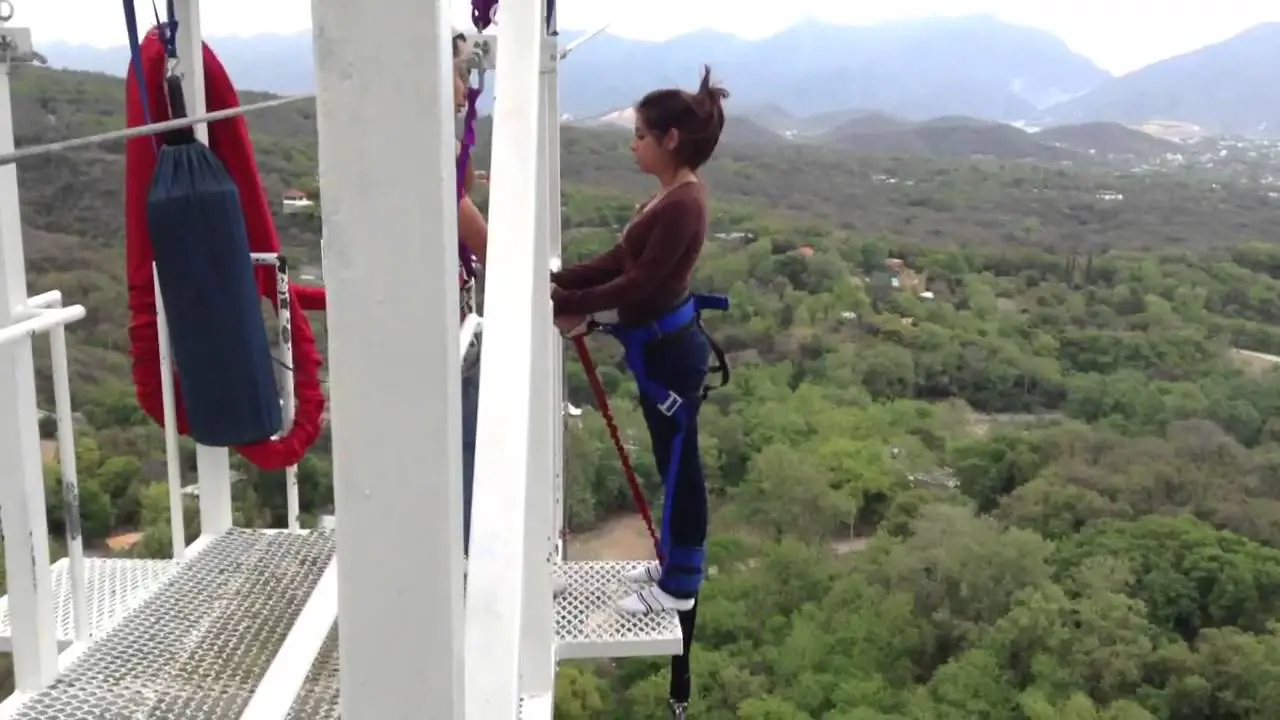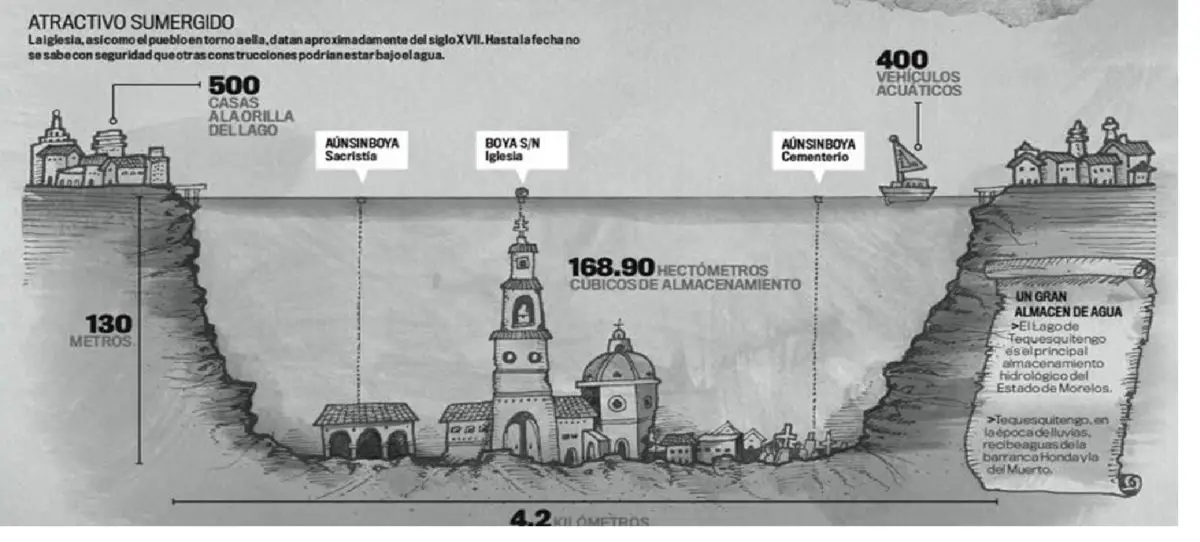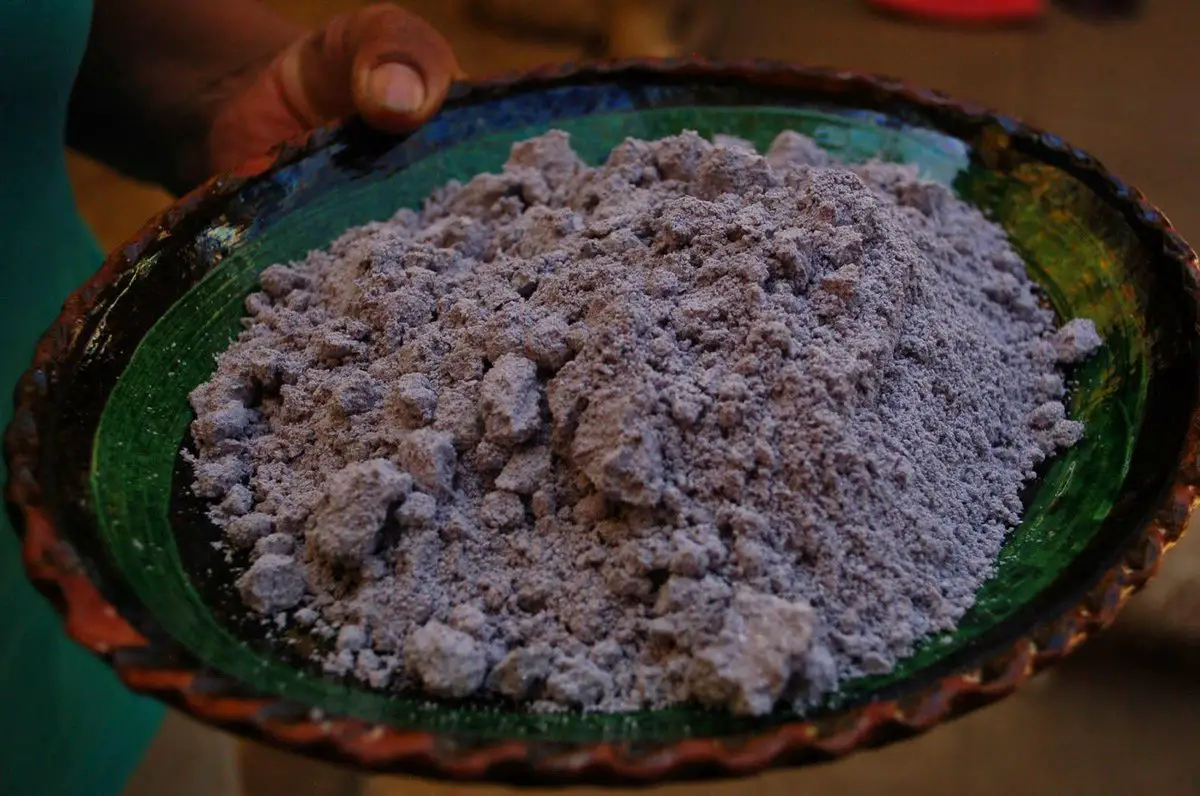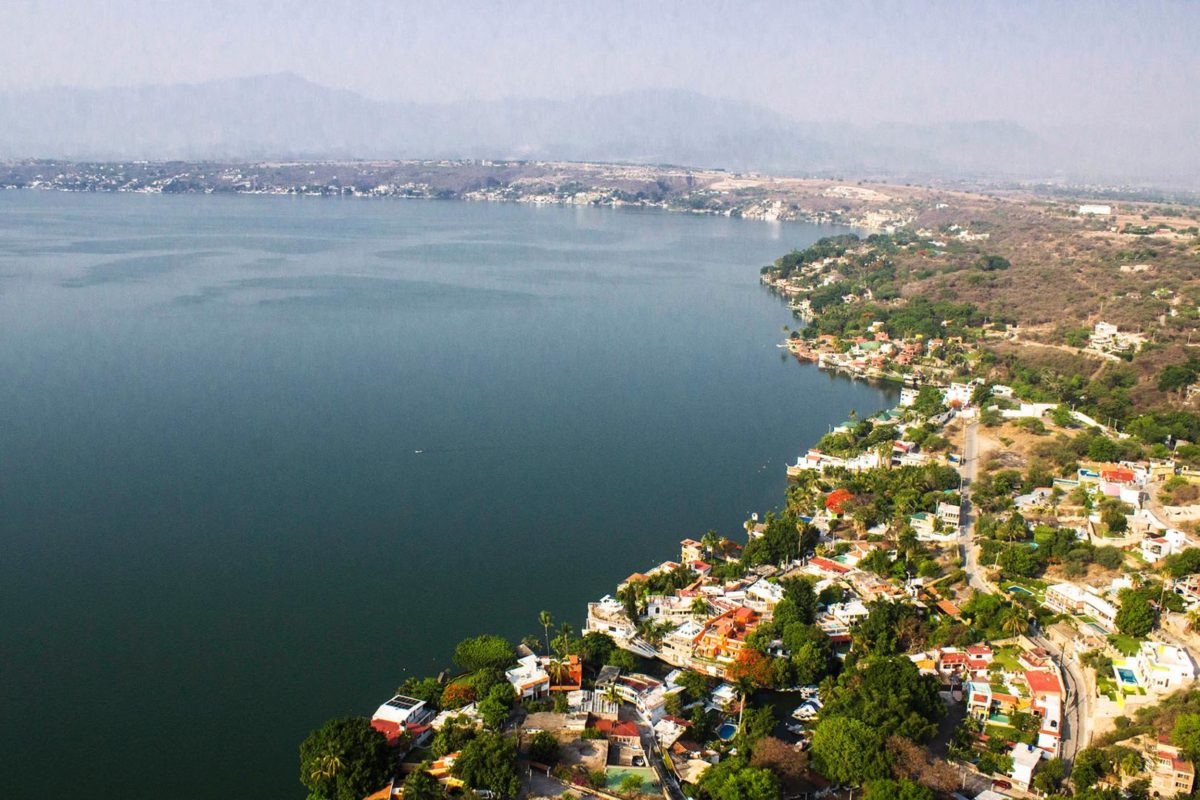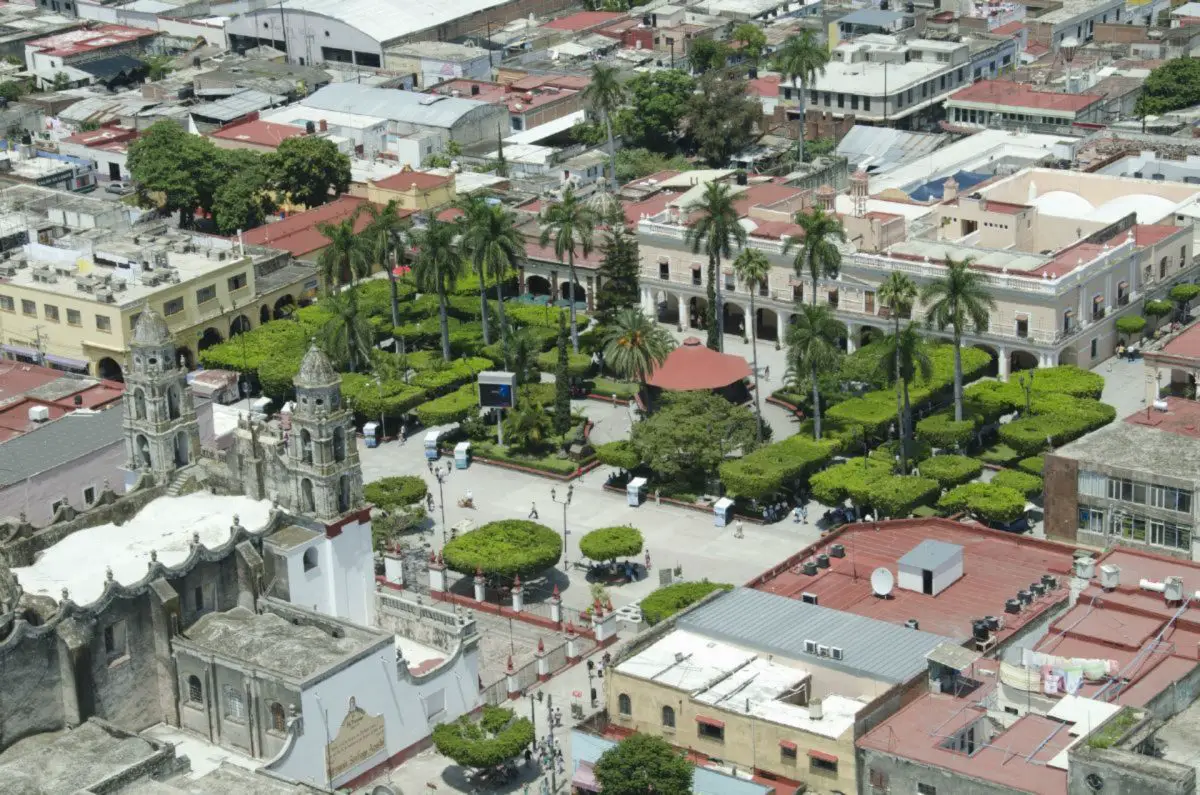Lake Tequesquitengo is the main water reservoir in the state of Morelos, 111 kilometres from Mexico City; it is a deep tectonic trench formed between caverns that have dissolved its rocks. Discover all about this lake; its history, characteristics, sports (diving, wakeboarding, wake surfing, parachuting, bungee jumping), legends and much more, don’t miss it.
Indice De Contenido
History of Lake Tequesquitengo
On this occasion, we will take a tour to know all the relevant aspects of Lake Tequesquitengo, starting with its history, which is marked by its beginning in the year 1650, after an indigenous group settled on its shores to exploit the tequesquite.
This is a natural sea salt that was used to season food, but it was also used as a raw material for making soap to clean cattle and horses.
This indigenous group that lived in the area was responsible for planting sesame and maize, among other crops. They also had buildings, including a temple occupied by Dominicans from the convent of Tlaquiltenango, dedicated to San Juan Bautista.
Later, in the 19th century, the owners of one of the haciendas in the area, known as San José Vista Hermosa, converted the land in this village into sugar cane fields. But when the irrigation water from these fields was diverted to Lake Tequesquitengo, the inhabitants of the area were forced to move to higher ground.
This was the case in 1865, when the waters completely covered the temple that existed in that place. The city was located in an area with a high concentration of limestone, which dissolved with the erosive passage of the water.
This event is cited by John Womack in his writings on Zapata and the Mexican Revolution when he comments:
“Of these failures, the most impressive was undoubtedly that of Tequesquitengo. The peasants had offended the owner of the nearby hacienda of San José Vista Hermosa, who, in retaliation, dumped his irrigation water into the lake and flooded the whole town…”.
Much of this changed in 1940, when the government expropriated some 505 hectares around the Laguna de Tequesquitengo to create a tourist centre. Not only the lands of the San José Vista Hermosa hacienda were affected, but also others known as Xoxocotla, Tehuixtla and Tequesquitengo.
For economic reasons, the State of Morelos did not make any progress with its tourism plans, so in 1942 another decree was issued for the expropriation of the same lands, which were transferred to a company called Terrenos y Turismo, S.A..
However, this company did not prosper as expected, and in 1975 the land was expropriated again and the rights granted to the Fondo Nacional de Fomento Ejidal, with the aim of transforming the area into a trust with the joint participation of several owners and organisations, including
- Nacional Financiera, S.A.
- Fonafe
- The ejidos of Tehuixtla
- San José de Vista Hermosa
- Xoxocotla
- Tequesquitengo
Thanks to the participation of all, Lake Tequesquitengo has a tourist infrastructure worthy of large cities, with hotels, restaurants and all the necessary services to comfortably accommodate the large number of tourists who visit throughout the year.
Characteristics
By knowing the characteristics of Lake Tequesquitengo, we have the opportunity to present it to the world, distinguishing its peculiarities from those of other lakes. In this sense, it is possible to highlight the following aspects that characterise the lake:
- In the place where Lake Tequesquitengo is now, there was originally a small lake at the bottom of a pit, and on its banks the village of San Juan Bautista Tequesquitengo was built.
- In the middle of the 19th century, this lake began to increase its flow and ended up completely flooding the town.
- These floods created Lake Tequesquitengo in the state of Morelos, 111 kilometres from Mexico City and only 39 kilometres from Cuernavaca. It is located between Puente de Ixtla and Jojutla de Juárez.
- It is a lake in the shape of a drop, with a closed basin of about 28 square kilometres, created in a tectonic fossa that is 130 metres deep.
- The lake’s surface, or mirror of water, is 4.2 kilometres long and 2.5 kilometres wide, with a perimeter of 16 kilometres, at 887.37 metres above sea level.
- It is the main water reservoir in the state of Morelos, with a capacity of 168.9 cubic hectometres, and even when it reaches this level it can flood the rest of the region for up to eight square kilometres around it. This is limited by the threshold of a spillway tunnel built to contain its flow.
- The lake receives water from several tributaries, such as Barranca Honda and Barranca del Muerto. In general, however, it is fed by a series of springs that reach different points in the Tequesquitengo Lake.
- The water of the lake is used for livestock, agricultural, domestic and tourist activities.
- The village submerged in this lake can be found thanks to the existence of a buoy that marks the exact location of the dome of its church, which can be seen only six metres from the surface of the lake.
Water quality
One of the characteristics of the water of Lake Tequesquitengo, also known as the Sea of Morelos, is that it has a high concentration of dissolved solids, due to the fact that this lake is mainly fed by the Zacatepec aquifer, which has calcium bicarbonate water with a very high conductivity.
The oxygen present in the water of the lake diminishes as you descend into this body of water, due to the presence of an intermediate layer known as the thermocline, where the surface water does not mix with the bottom water.
But by the end of the year, the oxygen-depleted bottom waters rise to the surface, mix and begin to cause massive fish kills. This is because although the water is moderately potable, it has a high degree of hardness due to its bicarbonate calcium components.
For this reason, in order to protect the health of the population and to avoid health risks, the water of Lake Tequesquitengo must be constantly monitored throughout the year by the authorities of the state of Morelos. In general, however, it has been established that its waters meet all the parameters set by the World Health Organisation for recreational and sporting use.
The overturning phenomenon
This is a phenomenon linked to the quality of the water and the drop in temperature it experiences during the winter. This phenomenon causes the colder water to become dense and lacking in oxygen, which is why it is considered anoxic, and it begins to rise and mix with the surface water, which is generally oxygenated.
As a result, the body of water becomes deoxygenated, which unfortunately leads to the death of many of its fish. In this respect, it is common for people who observe this massive disaster for the lake’s fauna to attribute it to the pollution caused by its visitors.
In fact, there is even a sulphurous odour that is generally associated with elements of dirt; however, studies have generally shown that from February to April this phenomenon is reversed, so that the waters are clear and even many of the buildings of the sunken village, including its church, can be seen in them.
It is also worth mentioning that the massive fish mortality does not always occur, as there were some years, from 2009 to 2012, when this phenomenon was not observed. In 2013, however, the lake showed white patches on the bottom caused by the death of fish known as flounders, albeit in small quantities.
Activities you can do at Tequesquitengo Lake
Lake Tequesquitengo is one of the most attractive tourist destinations, usually chosen by those who enjoy water sports, be it skiing, boating, swimming or scuba diving, this place is ideal, especially for those who want to see the remains of the church of the old town submerged in its waters.
In May, the fiesta in honour of the Lord of the Ascension is celebrated, with a solemn boat ride around the lake, followed by a mass and a series of cultural events, full of traditional dances and the sale of typical Morelos handicrafts.
As a result, at this time of year there is a huge influx of tourists to the area, and many hotels and houses are rented out for the weekend. In fact, this region of Tequesquitengo has many attractions, as it is the fourth most important archaeological area in Mexico, with the fortified city of Xochicalco being one of the most important.
Only 25 minutes away, you can visit this fortress, which belongs to the municipality of Miacatlán, also in the state of Morelos and declared a World Heritage Site by UNESCO in 1999, and although it is not close to the lake, it is worth a visit because it is the cradle of the cult of the god Quetzalcoatl, very important for later civilisations such as the Mexica or the Toltecs.
Once in the area of Lake Tequesquitengo, we find the Caves of Cacahuamilpa, which are quite visited by tourists and which include a forty-minute drive. This is a tour where everyone can enjoy contemplating the whims with which nature has created these strange lands.
You can also take the little ones to the zoo, just twenty minutes from the lake, where animals are kept in their natural environment.
However, given the wide range of activities that can be carried out during a visit to Lake Tequesquitengo, we would like to describe some of them in more detail, so that all our readers can get an idea of the tourist attractions that this place has to offer.
Hot air balloons
Hot air balloons are airships that use a bag containing a mass of gas lighter than air, which inflates the balloon and causes it to rise in the sky, controlled by the weight and the entry or exit of this gas.
These balloons are equipped with large baskets that are used to carry passengers, taking them on rides where they can admire all the beauty of the panorama at their fingertips.
Since 2009, Lake Tequesquitengo has been promoting the services of companies responsible for tourist attractions, and one of them has arrived with these hot air balloons, which are a great visual attraction for all visitors.
Families as well as couples take off at dawn, as the ideal weather conditions are between 6 and 7 a.m., when the panoramic flight begins, during which the tourists in the balloon can see the whole of the lake and the surrounding towns.
This activity is complemented by parachute jumps, which have been practised since 2013, but always under the supervision of the General Directorate of Civil Aviation.
Scuba diving
Diving is an activity, also known as scuba diving or snorkelling, in which a person immerses their body in water, either fresh or salt, in order to explore their inner self.
Many do it professionally, but others do it recreationally. In the waters of Lake Tequesquitengo, diving is generally done to observe the flora and fauna, but also specifically to see the bell tower of the church, which is submerged in the lake.
Some divers have set themselves the challenge of finding clues to reconstruct the plans of the church, but this is difficult due to the poor visibility of the site.
From 1987, a group known as Proteus began a series of researches under the waters of the lake, which by 1989 had become a scientific committee, using diving techniques with limited visibility to find out exactly what the sunken village looked like through measurements, drawings and photographs.
They have made advances in the architectural knowledge of the site, as well as plans that allow any diver to reach the location of the structures, which has also served to make the practice of diving courses safer.
Wakeboarding
Wakeboarding is the practice of water skiing on a board, which is basically an activity in which a person equipped with a board slides through the water, pulled by a rope called a palonier, which is pulled by a boat or jet ski.
Tequesquitengo is considered to be the Mexican capital of skiing, a fact confirmed by many athletes who believe that it has two essential elements: an excellent geographical location and an unbeatable climate.
Throughout the year, there are several sporting events of this type, such as the National Wakeboard Tour, which attracts many skiers who want to physically demonstrate each of their impeccable techniques.
The water’s surface and masses are the perfect stage for performing 360-degree turns in the air and masterful somersaults. Many young people come to the lake throughout the year to take part in camps or professional courses.
Wake Surfing
Another water sport that can be practised in the Tequesquitengo Lake, or as some people call it, the Tequesquitengo Lagoon, is wake surfing, which is considered to be a drag sport in which the wave makes it possible to surf, or the transfer in a boat can be used for this purpose.
Basically, to practice this sport, the person is transported on a board, pulled by a rope that is released after reaching a certain speed at which a wave can be caught. Obviously, the lake does not have the characteristic swell of the sea.
However, wake surfing is a form of water-skiing that has become increasingly popular among the sports activities usually practised by tourists, a trend that reached its peak after the visit of the sportsman Dominic Lagacé in 2010, who held a series of demonstrations and seminars during his stay.
All this is thanks to the fact that Tequesquitengo Lake is one of the favourite places of this sportsman, because of its calm waters, favourable climate, but above all because of the affection and warmth of the locals towards all visitors.
Parachuting
Skydiving, apart from being a sporting activity or a military strategy, is basically a launching technique used by both people and objects that are launched into the air at a certain height and whose fall is cushioned by the movement of a parachute that allows them to glide through the air until they land without any great difficulty, as the parachute itself cushions the descent.
This technique can be used from any aircraft, be it a plane, helicopter or hot air balloon. It can also be done from a fixed object at the necessary height for the parachute to open safely during the fall.
Lake Tequesquitengo also has a legendary parachuting centre that has been operating for more than five decades and is known both nationally and internationally.
Many people with some knowledge of skydiving visit this lake during their holidays to overcome their fears of jumping out of a plane at 12,000 feet above sea level and experiencing a speed of 220 kilometres per hour for about 35 seconds.
As a reference, it is said that one of the modalities of the skydiving technique is the base jump, which is performed from a fixed place, where there is only one parachute and without the safety systems of automatic opening, typical of aerial jumps, due to the fact that the reaction times and the distance are not optimal for these systems.
Near the lake there is a bridge called Mezcala, which is used by many lovers of risky and extreme sports, who come there with the aim of jumping from a height of 160 metres, but it is essential to have extensive experience in parachuting to avoid unfortunate accidents.
Aeroplanes
The lake also offers activities related to microlight flying, as it has excellent weather conditions for most of the year. Even during the rainy season, flights can be arranged as they usually take place in the afternoon or evening.
This means that you can fly over the lake and admire the whole panorama, as well as live the experience of feeling how the plane moves through the air. The lake has become a reference point for this type of activity, offering sightseeing tours, schools to teach those who wish to become pilots, and even the sale of aircraft.
The planes that are considered ultralight are generally used for sporting purposes for free flight, or what is known as hang gliding; also included in this category are light aircraft with an engine, but which are light in weight and require little fuel or lubricant to achieve flight.
Pilots from all over the country and abroad usually meet at weekends to fly over the area and land on the lake’s airstrips, exchanging experiences, but it is important to note that they must be people who have the appropriate certificates issued by the General Directorate of Civil Aviation to fly these aircraft.
Bungee Jumping
Bungee Jumping is an extreme sport that consists of jumping from a certain height, usually a bridge or a platform, into the void; the person is tied at the ankles with an elastic rope that allows him to fall in an accelerated way, cushioning his descent when the rope is softened, giving him a series of accelerated and constant rebounds until he loses his speed.
This exciting activity allows all the tourists who try it in Lake Tequesquitengo to feel the adrenaline rush, opening their arms and letting themselves be carried away by the thrill of the moment.
It is a jump performed from a height of more than sixty metres, from a platform equipped with special equipment, where there are also expert personnel who act as instructors for all the visitors who want to try this risky physical activity.
Legends
Legends are an indispensable part of history because they give meaning or justification to many of the things that happen around people; they are stories that people grow up with and that are passed down from generation to generation.
They are popular tales, real or fantastic, that are part of the folklore of the people of Morelos and are passed on orally to the many tourists who want to hear them.
One of the most popular legends tells of the existence of an entire city that sank in the waters of the tranquil Lake Tequesquitengo, which we would like to share with all our readers.
The sunken city of Tequesquitengo
It is a story that has been told since 1845, when a small village called San Juan Bautista, located in the area where the Tequesquitengo Lake is today, was completely submerged by the waters of the lake.
According to the story, this village was located in the area occupied by the lake and was completely flooded by order of the Mosso brothers, who were the owners of a nearby hacienda known as San José de Vista Hermosa.
It is said that to the north of this area there was a small lake that served as a source of food for the inhabitants of the town, who also extracted from its shores the tequesquite, the mineral after which the town is named, but as a result of disagreements between these settlers and the owners of the hacienda, the Mosso brothers dug canals that diverted all the irrigation water for their crops into the valley, completely flooding it.
Sceptics believe that the real cause of this event was a violent earthquake on 7 April 1845, which caused the aquifer system to rupture and flood the entire valley. The inhabitants of the town did not abandon it, however, but chose to settle in the higher parts of the region, where they were able to continue their lives as before.
The curse of Lake Tequesquitengo Village
Another legend says that many years ago, in the southern part of the lake we know today, in the state of Morelos, near Zacatepec, there was a small but picturesque village called Tequesquite; its name came from the abundance in that region of the stone of the same name, which was mixed in casseroles with foods such as corn, peanuts or pumpkin seeds to give it a unique flavour.
Many of the cooks of this place were famous for their delicious dishes, among which the stews of corn (maize) that they prepared, roasted with pumpkin and chilli, stand out. This particular stew was given the name of Esquites to distinguish it from those prepared in other parts of the country.
It is said that Tequesquite was full of travellers who came to this place because of the peculiar taste of its masterful dishes. Many were intrigued and wanted to know what recipe the women used to prepare such delicacies. To keep their secret, the women gathered the tequesquite while the young men of the village stood guard to prevent any intruders from spying on them. The men, on the other hand, generally devoted themselves to working in the fields.
But according to legend, someone in the village betrayed them, and it is said that it was the sorcerer known as Pedro Molesto who negotiated with a traveller to give him some tequesquite in exchange for some goods.
Pedro followed the cooks as they collected the stones, and when one of them separated from the group, he threatened her to hand over part of their cargo, but she refused and they ended up fighting, the fight ended when the sorcerer struck her with his cane, causing her death.
He then carried the woman’s lifeless body to some rocks to make it look as if she had died in a tragic accident, and took possession of Tequesquite’s cargo, quickly returning to his hut to wait for nightfall and escape the village with his precious booty.
The cook’s family were worried when they did not see her and immediately began searching for her until they found her body and began the wake. Once there, the widower commented that it was strange that they had not found the tequesquite next to her body.
Under these circumstances, they began to suspect that it was a murder and not an accident, and all the signs pointed to the sorcerer Pedro Molesto, because they knew that he wanted to take possession of these stones, which were collected by the cooks.
The whole village went to the place where the dead woman’s body had been found and discovered Pedro’s footprints. They went to his hut in a rage and found him in front of an altar full of human skulls and stuffed animals, and he, feeling threatened, began to throw everything he could get his hands on at the people, including the Tequesquite.
Pedro is captured, confesses his crime and is condemned to die at the stake, but before he is burned, the sorcerer announces to all present that the town will be destroyed because he has put a curse on Tequesquite.
The truth is that the next day the town was flooded; furthermore, the story goes that the sorcerer, without anyone seeing him, had placed a bottle of sea sand, from which salty water began to flow right into the centre of the town.
It is said that the houses began to collapse under the devastating force of the water, and thus was born the Lake of Tequesquitengo, which is not salt water but fresh water and is one of the main sources of water in the state of Morelos.
The elders who have lived on the shores of this lake for many years say that on moonlit nights, and especially when it is not raining, the top of the bell tower of the church where the inhabitants of Tequesquite used to gather can be seen in the middle of this enormous body of water.
Tequesquitengo, much more than a lake
During our tour of Lake Tequesquitengo, we discovered a series of very different activities, some aquatic, some aerial and some risky and adventurous for lovers of extreme sports.
What is certain is that this is a special place to share as a couple or with the family, with an exceptional climate at any time of the year and with so many tourist resources that your enjoyment and fun are guaranteed.
As we have been able to appreciate, this lake also has an important historical trajectory and also within it a series of beach clubs have been developed, where tourists are offered plans for a series of aquatic activities, as well as swimming pools or pools, so that all visitors can take a break and relax from the stress of everyday life.
While all the adrenaline is pumping in the water, the atmosphere in the restaurants, bars and other areas is more relaxed, with Mexican and international cuisine on offer.
All of this makes Lake Tequesquitengo the third most visited tourist destination in the country in terms of health and wellness, offering holistic wellness through the treatments offered at its many and varied spas, such as the Diamond-certified Hotel Villa Béjar.
The people of the region are eager to show, through their friendly and helpful treatment, that this is a unique experience that all visitors to Lake Tequesquitengo should try, especially if they come with the intention of resting and enjoying a moment of relaxation and complete spiritual healing in contact with nature.
Another interesting alternative is that offered near Lake Tequesquitengo, in the town of Tehuixtla, where there are excursions to the Amacuzac River, where you can swim and go rafting, which consists of descending through the rapid currents of its waters in a boat without an engine, and which takes place from July onwards, when the water currents in this river increase.
For all of the above, we invite you to visit Lake Tequesquitengo and take advantage of the opportunity to get to know all of the nearby regions, extending your tour within the state of Morelos, Mexico.
People who are in this country can get to the lake by car, taking the highway Cuernavaca-Acapulco 95D; just ten minutes after passing the Jardines de Mexico, where you will find the exit Jojutla-Morelos 9-Tequesquitengo and after that, in five minutes more, you can enjoy this sea of Morelos that we have known as Lake Tequesquitengo.
The only thing you have to do is prepare your itinerary, because you will have so many activities to do that you will probably run out of days to do them, so we suggest you make a list of all the things you would like to do during your visit to the lake, but if you just want to rest and have peace and quiet, we suggest you spend a quiet day fishing for trout, which you can enjoy later in your cabin.
If, on the other hand, you want to enjoy the fresh air and the beauty of the landscape, you can go on one of the many hikes, with ups and downs, that will allow you to get to know the surroundings and get in touch with the flora, fauna and, of course, the majesty of Lake Tequesquitengo.
Finally, we offer a last curious fact about this lake, and that is that in order to improve and promote tourism, its inhabitants have created a brand that serves as a promotion identified under the name of TEQUES, thus becoming the first tourist destination to have a brand, above that corresponding to the state of Morelos, within which Teques takes the advantage over other tourist destinations such as Cuautla, Cuernavaca or Tepoztlán, thanks to the strength of its advertising.
If you like the information in this article, we invite you to discover more by clicking on the links below:
- Lake Maracaibo
- Lake Texcoco
- Lake Titicaca
- Lake Baikal

